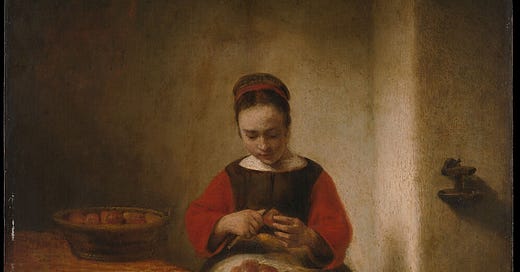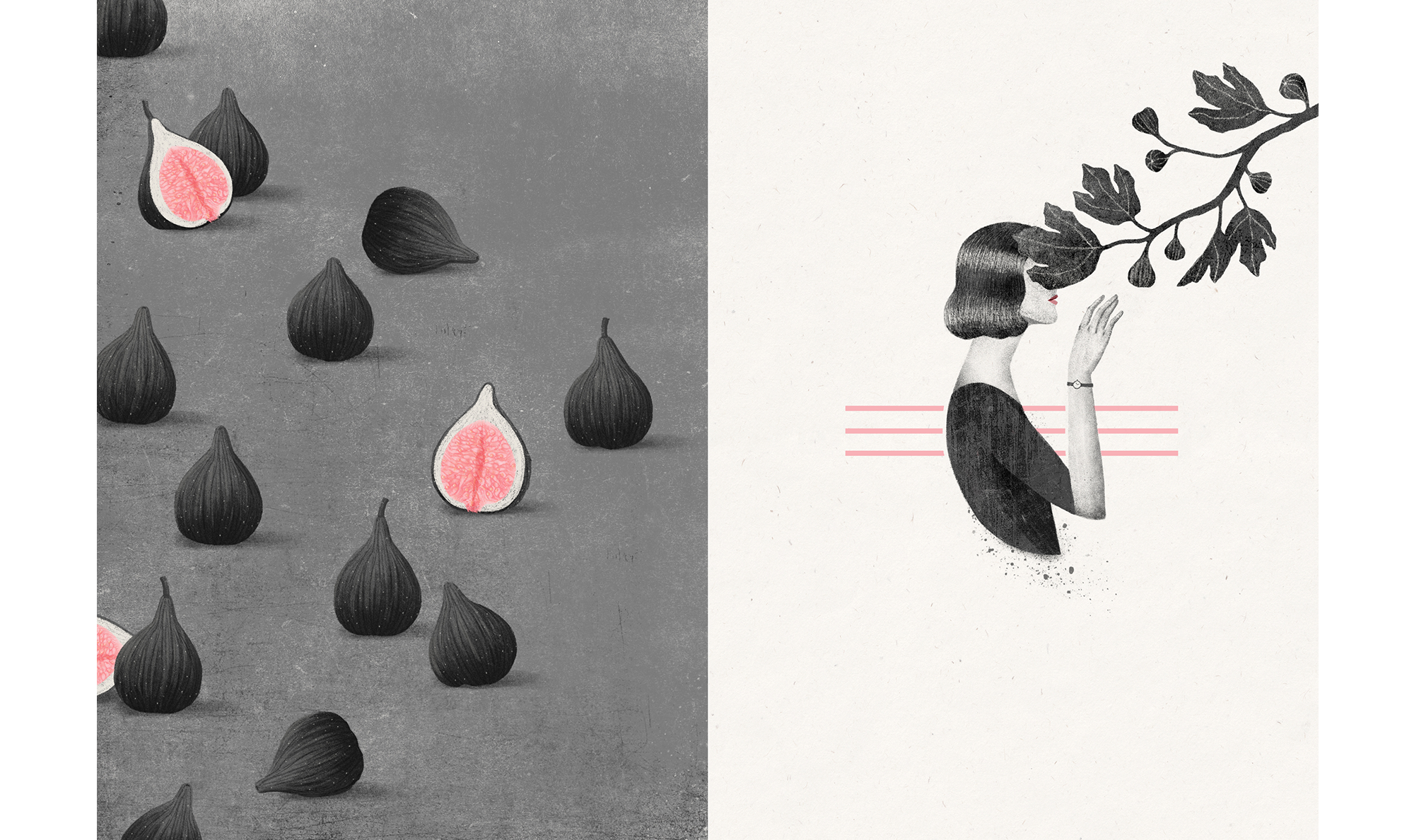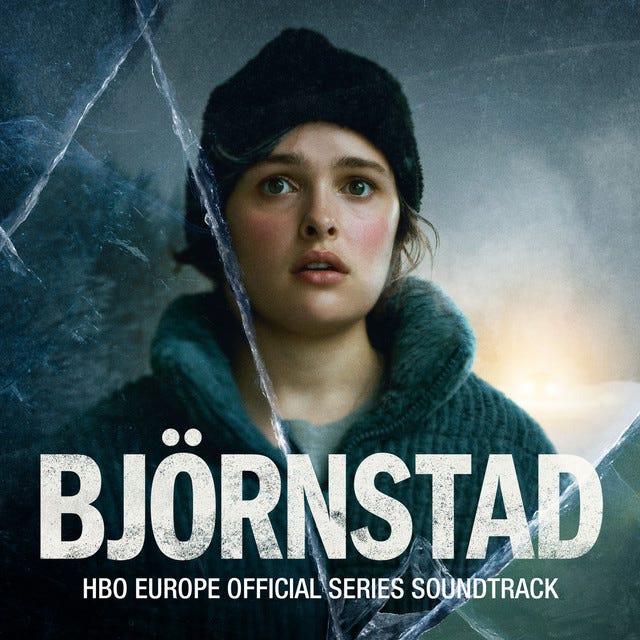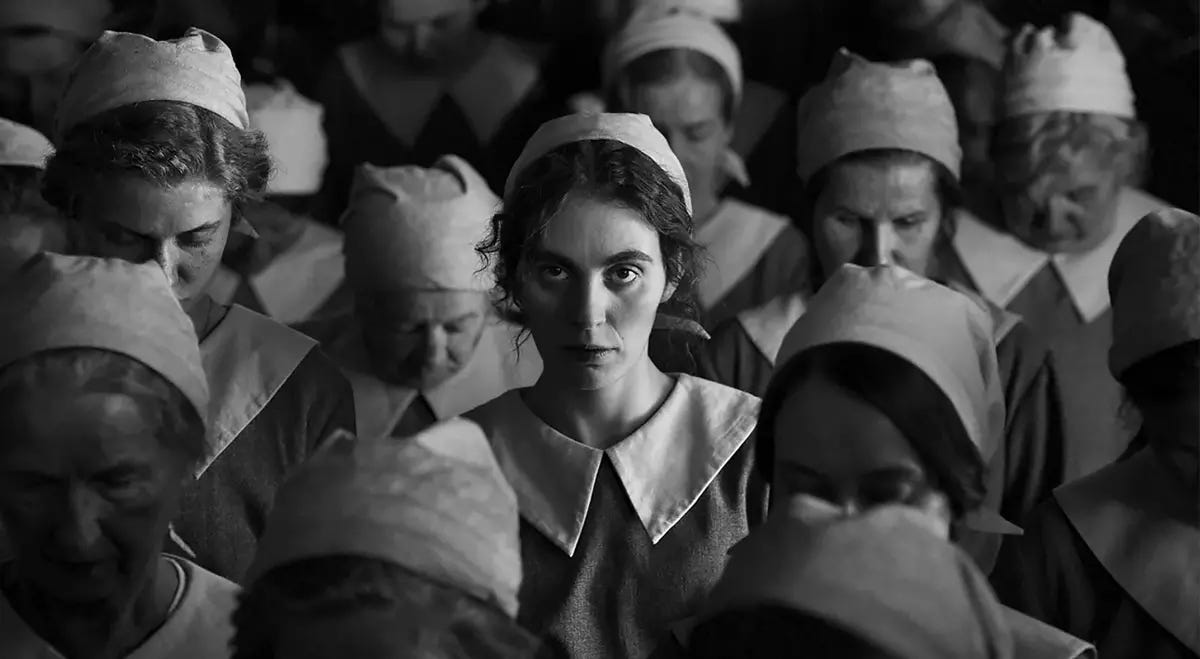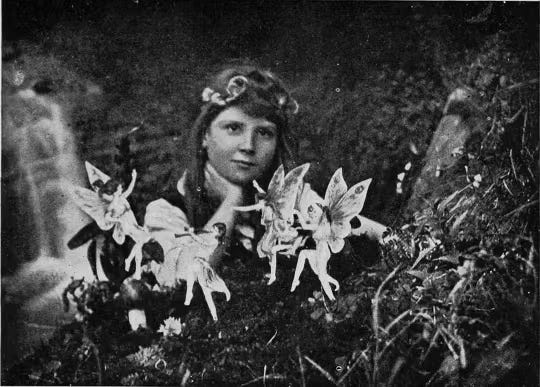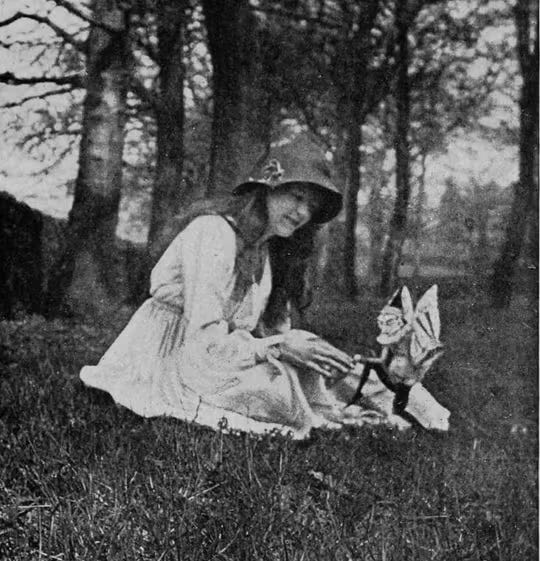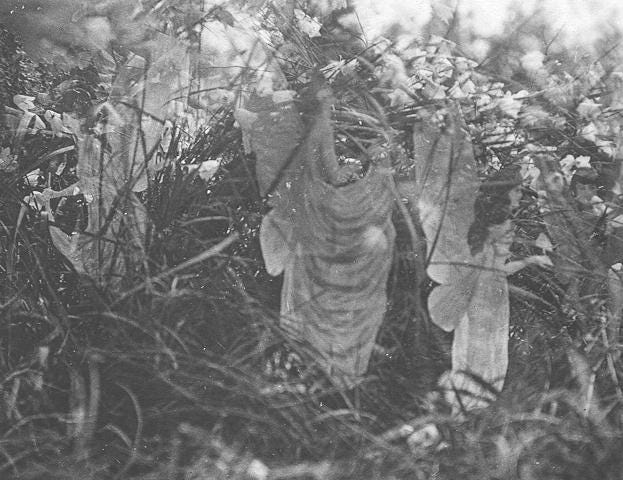On girls; pain and innocence
3 novels and 1 movie | What I read, watched and paid attention to in the first quarter of the year
I have an aversion to the word girl. It bothers me when it is used for women in their late 20s, and above. This annoyance is unwanted, I am embarrassed about my distaste. I particularly work to make myself more comfortable with it, but most of the time I have a cringe worthy initial reaction on hearing it addressed to me. A 25 year old called me and my colleague, women in their 30s, “girls”. It was in a team building context, certain she meant well. But I soured. An older woman in her 40s called me and a friend, “well you are just girls”. We were over drinks and sharing stories you give to strangers, a kind of comfort you can lend to a sentence that would otherwise make friends concerned. I thought I showed age in my wisdom. And yet when she referred to me as a girl, I felt dismissed. Small.
All this to say, as I began the year with a book and film goal, I gravitated towards works of pain. Not a cheerful start? January seldom is. I gave myself the gift of pain in literature, one that enabled me to feel the blues of the new year with Plath’s words and Backman’s characters. I concluded it was a safe way to endure the passage of time.
3 novels on a young woman’s pain – The Bell Jar by Sylvia Plath, Beartown by Fredrik Backman and I Want to Die But I Want to Eat Tteokbokki by Baek Se-hee
1 film on female anguish – The Girl with the Needle by Magnus von Horn
The other theme that came to be was crimes against women, but the heaviness of that topic has me insisting I write a separate recollection, (a link will be pasted here in the future).
Novels
In the ten year gap between my first and second reading of The Bell Jar, my life is unrecognisable. Sylvia Plath published the book under a pseudonym, Victoria Lucas. Why? It is speculated that she wanted to save herself from the embarrassment of writing something so deeply personal, semi-autobiographical, and because it could hurt the people in her life. This did not remain to be a concern held for long, for a month after the publishing she passed away and her family’s attention swiftly turned to their grief and carrying her legacy. The character of The Bell Jar - Esther - is 19 years old in the book. Plath was 28 when she wrote the book. It was an act of reflection. I first read it when I was 23, and now I am 33. In my reading too, I was reflecting on myself, then and now. My body has changed. I hated it then, I merely dislike it now. I was a volcano science experiment then, now I am a cucumber salad. I cried more often then, and I laugh more often now.

In the early chapters I realised the book is funny. Plath is hilarious, if such an expression can be used for consistent scoffing and dry chuckling. Esther goes on to an adventure, which any other book would have had more fun with. But Esther suffers, and it continues for her throughout the book. I will not deny that the book is bleak, but to my own surprise it was also amusing. Eventually the story grows darker as her character goes from living in anguish to dealing with it, from curiosity to defeat. I like to imagine the nights she was writing this particular novel. More than creation, she was sitting with her younger self and pouring out that narrative on paper. Similar self reflection is more common today. In my imagination, the act of this decade later reflection is a little dangerous, the thrill of rediscovery in tandem with the pain of reliving. Plath herself called it “an autobiographical apprentice work” in her letters, a modesty made all the more haunting knowing this would be her first and only novel published. She wrote the book quickly, and had minimal revisions on it. This top speed writing, one I can find enviable, resulted in a book that got quickly rejected as well. A publisher called it juvenile. However, it did gain some critical acclaim after being published, which Plath said was “inadequate”. This is inevitably a terrifying prospect, because we know of the circumstances of her life in those weeks, that in some time later she would take her own life. It is indicative of the cost of self criticism, among other things, and their possibly terrifying outcomes. But to read it at 23 felt like a rite of passage. As per my recollection, I had endured it. All I felt was sadness. I remember noting how depressing the book was, and how girlhood felt futile and painful. I saw women near me read it in the same vein. I saw a person become completely depressed during her “Plath” days. Yet it has been a voice to female teen angst for over five decades. Its adoration is endless. Its mockery is ever increasing. And it amuses me to read a book on a 19 year old girl’s life, written by a woman a decade older. I understand my own rejection of the book in my girlhood, and today it helps me view my younger self more kindly.
Because I return to read this over and over, I am pasting The Fig Tree below for my future self:
"I saw my life branching out before me like the green fig tree in the story. From the tip of every branch, like a fat purple fig, a wonderful future beckoned and winked. One fig was a husband and a happy home and children, and another fig was a famous poet and another fig was a brilliant professor, and another fig was Ee Gee, the amazing editor, and another fig was Europe and Africa and South America, and another fig was Constantin and Socrates and Attila and a pack of other lovers with queer names and offbeat professions, and another fig was an Olympic lady crew champion, and beyond and above these figs were many more figs I couldn't quite make out. I saw myself sitting in the crotch of this fig tree, starving to death, just because I couldn't make up my mind which of the figs I would choose. I wanted each and every one of them, but choosing one meant losing all the rest, and, as I sat there, unable to decide, the figs began to wrinkle and go black, and, one by one, they plopped to the ground at my feet.”
Sylvia Plath, The Bell Jar
With Beartown, I was rooting against the book. As this was a big shift for Backman - tonally darker than his previous writings - I was prepared to feel disappointment over his writing on assault and the endurance of pain in a girl’s life. But the book established the universe so well, every character was driven by their unique nature and specific motivations. It felt like a real town, hockey at the centre of it bringing the good and ugly of small town sport obsessions. I could imagine many such towns, many people holding onto a local sporting team bringing them purpose and happiness. By the end I was satisfied with its handling of young female characters. The two girls in it, two best friends, brought me joy. Often with television shows and films, I find it easier to contemplate if an assault scene really adds to a story. And often the answer is no. In Beartown, the assault shifts the universe so drastically, as though the pages themselves turned a shade darker. No one is untethered and unimpacted from it. I like this quote from a Star Tribune review of Beartown:
"Current fiction may have no more courageous young female character than Maya, who faces hate and threats after she comes forward about the rape."
And Maya has her friend, whose love is meaningful and her presence is paramount to Maya’s well being. This was hopeful and idealistic of friendships from girlhood. When the book comes to an end, what endures is not the echo of the pain and violation, but the way girls can love and care for each other.
What truly tested me was the reading of I Want to Die But I Want to Eat Tteokbokki. It isn’t a novel, but a transcript, an essay-like collection of conversations with a therapist. I felt a persistent fatigue while reading the joyless outlook of a young woman. And in reading it, I realised that the book was too real for me. I saw so much of my younger self in her, I was rife with frustration. With The Bell Jar, my rereading had no spoilers. I went with empathy so I enjoyed it quite easily (“enjoy” being holding onto a pillow for comfort and never reading in daylight). But with this book, my comprehension of the character’s motivations and trepidations were in tandem with my own dismissal of my younger self’s ideologies. And I had so many. A majority of my bad choices and their bad outcomes can be drawn to misguided ideas of love and duty, health and beauty, all in a straight line. In active annoyance I finished the book, scoffing, tossing, with pettiness (like refusing myself a good beverage alongside it). For the duration of reading it I was a 20-something person, looking at my future self and shrugging my shoulders, “oh, well”.
Films
I suffered alone after “The Girl With The Needle” (trailer is here). I had snot, even phantom back pain, and I had no one to discuss this with. A short synopsis is that Karoline is a young factory worker, and she struggles to survive in Copenhagen, 1919. We see a factory floor celebrating the end of the Great War. We see women working on that factory floor, threadwork; Karoline works with a needle. And we see her life turning bleak.
The Guardian's Wendy Ide describes it as "a remarkable film: bleak, but horribly compelling," highlighting Vic Carmen Sonne's "phenomenal, feral performance.”
Anything that makes her happy soon turns sour. When she becomes pregnant, in her poverty and misfortune, she is forced to make difficult choices. We see her going from one choice to another, each tightening the story into knots, each feeling like a heavy choice with possibly dire consequences. And yet it is impossible to blame Karoline. All she ever tries to do is survive. She meets Dagmar1, a woman who runs an underground adoption agency. Dagmar comes to rescue her, giving Karoline the role of a wet nurse alongside her. But Karoline’s life continues to unravel. She is alone; then she is not. She believes her husband died in the war. And yet he returns. Circumstances upend her life over and over. Not a scene is wasted, nor a character. Everything and everyone serves its purpose, and the end is earned and the only moment of relief after a long narrative.
The experience is close to horror cinema. Shot in black and white, and in a 3:2 aspect ratio, the dimensions and style mirror photography of the early 20th-century. The film, with this, feels up close and personal. We are in Karoline’s shoes immediately, and stay there. We suffer, we fear, and we come to hope with her with caution. The black and white cinematography alone is perhaps the most striking feature of the film. The contrast is high, the setting is old, and the mood is off from minute one.
Karoline herself is not a young girl; the movie indicates she is in late 20s or 30s. But the movie has young girls, ones who watch these older women go about their lives and can see some of these heavy choices made. A little girl has her innocence trapped at the hands of these women. She lives with Dagmar, she warms up to Karoline. Once she entered the frame, I could not take my eyes off her in any scene. Her proximity to certain people, her interaction with each person worried me. I am reminded again that Karoline is not a young girl, but she is holding all the loss of girlhood with the passage of time. She is cast out by her lover, preyed upon by Dagmar, used by society. She embodies everything that is lost to women when they get older. Pregnancy is a tool of exploitation. Body is a commodity. While Esther (The Bell Jar) and Maya (Beartown) navigate the fragile pain of girlhood and young womanhood, Karoline’s story in The Girl with the Needle shows what happens when vulnerability persists into adulthood. Here, survival eclipses innocence. Girlhood’s dangers do not end with age; they simply take on crueler, more calculated forms. Dagmar’s daughter, the little girl who meets Karoline, her survival strategy is obedience, fear, and normalization of abuse. She is the innocence that Karoline once had, and Karoline is the future that she could have. And as I watched the two, my heart sank deeper and deeper into black abyss of gloom. I mourned my own loss, feared the oncoming. And I was relieved beyond comprehension when the movie was finally over.
Stories
In 1917, two girls were playing with their father’s film camera when they decided to experiment with it. They lived in a village called Cottingley. The Wright family's home backed onto a wooded area. Elsie, 16, and her cousin Frances, 9, wandered near a creek to take pictures. Elsie believed she had seen fairies, and now she was determined to find proof.
A hundred years ago, supernatural fairies were an obsession. You have to imagine it: the Industrial Revolution was reshaping the world. Cities were growing, rural areas were developing, and séances were held for fun. Big things were happening, and many once-impossible ideas were quickly becoming matter-of-fact. In that atmosphere, belief in fairies — and in the fantastical — was widespread. Peter Pan had debuted in 1907 and become a sensation.
To believe in fairies was to believe in magic at a time when scientific discovery still carried an air of mystique.
Elsie took a few pictures of Frances by the creek. Later, they returned home and declared they had found proof that fairies were real. Elsie’s father, aware of his daughter’s growing skill in photography and art, was suspicious. He helped develop the photographic plate himself, ensuring there was no tampering. When the photographs were revealed, everyone was stunned: there was Frances, surrounded by fairies.
The only explanation Elsie’s father could come up with was that the girls cut out pictures of fairies and took photographs with them. But the girls insisted the fairies were real, as were the photographs.
Later, Elsie’s mother, even with her moderate disbelief, took the pictures to a lecture at the Bradford Theosophical Society, a group that welcomed discussions about spiritualism and new-age beliefs. The photos impressed the attendees.
The Society’s president took the images to London in 1920, where Sir Arthur Conan Doyle, the author of Sherlock Holmes, saw them, and believed.
The truth, those pictures were made by cutting out fairies from a children’s book and posing Frances with it.
Doyle wrote about the photographs and used them to advocate for the reality of spiritual phenomena. Some photographic experts reviewed the images and agreed: the pictures showed no signs of tampering. The girls, who perhaps did not expect this to snowball as much, were asked to take more pictures. And they delivered. They took two more photos, one of Frances and one of Elsie, with fairies. The pictures were published. “There is proof!”
Sir Arthur Conan Doyle died in 1930, in belief of the existence of a magical-spiritual world.
The story of the making of these photographs does not get resolved until the 1980s.
Elsie, then in her 80s, admitted that the pictures were staged, and added how the Conan Doyle’s endorsement and media frenzy overwhelmed them. The fairies became such a prominent topic of conversation and notoriety that they were too embarrassed to admit the truth.
What I love most is how innocently it all began: two girls playing together on a lovely afternoon, unaware that their small adventure would spiral into worldwide attention. Even Elsie’s parents, perhaps proud of their daughter’s creativity and commitment to the bit, shared the photographs.
I can imagine what an outstanding story it was — a single afternoon of fun leading to a brush with the creator of Sherlock Holmes. They wrote about it, they earned modest income from it, and a harmless lie became the source of the belief systems for countless people.
I adore this story because I often think about that afternoon. Acts of innocence like these, despite their controversial outcomes, should be cherished and remembered.
Other items of note
In an endeavour to not rely on Spotify recommendations alone, I am manually clicking on a lot of playlists that are “human made”.
Yusuf Lateef’s “Like It Is” has been playing on loop. It is my go to focus zone song now.I watched Severance season 2 with the Internet, episode by episode. My outie is sad the season is over. My innie lives on the Severance Subreddit.
Thank you for reading this. A lot of consumption of art is reflection, and instead of consuming it mindlessly, I am working to inhale all that it is trying to give me.
I hope your March was full of comfort, and your April be merry.
Until next time,
Nats
Notes:
I had an entire section dedicated to a painting I learnt of this month. I did a double take while looking at a picture of a painting. Thérèse Dreaming, by Balthus, a French artist in 1938, has an unnerving tone that comes through on the second blink. There was a petition to have it removed from The Met (museum). At best, the museum could opt to re-contextualise it. Therese Blanchard posed for the artist since she was 8 years old, well into her teens. The sexualised nature of the painting has me at odds with it as well. Should we display art that tells us of the horrors of the world or hide it to protect the subject, albeit decades after it was painted? To me, the painting is deeply distressing. More about the petition here. More about Balthus and his works.
Dagmar is based on a real person in 1920s. She was a serial killer who took the lives of many children placed in her care.
